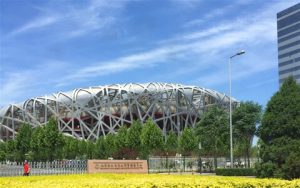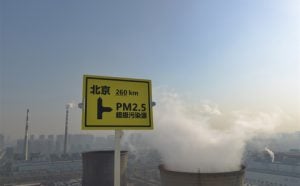The data shows PM2.5 levels in Beijing for the first six months of 2015 fell 15.2% year-on-year. The Beijing-Tianjin-Hebei area as a whole experienced a fall of 22%; the Yangtze delta a 16% reduction; and the Pearl River delta 20.5%. The average fall across 74 major cities was 17.1%.
Gan Zhongxue, head of a special task force set up to tackle PM2.5 pollution, told media that efforts to clean up China’s air were starting to show results. Incidences of heavy pollution are now less frequent, less intense and shorter, he said.
Hao Jiming, a member of the Chinese Academy of Engineering and an expert on atmospheric pollution, said the improvement is down to tough law enforcement and anti-pollution policies taking effect.
Energy use is becoming cleaner, more efficient and more sustainable, he added. Coal consumption, which fell in 2014, has become an important indicator of success in dealing with air pollution.
Analysis from the MEP says vehicles were the single biggest source of pollution in the capital, while 30% of air pollution in Tianjin comes from dust, and in Shijiazhuang, coal smoke is the main culprit.
In Nanjing, 27.4% of air pollution is due to coal-burning; in Shanghai, cars, trucks and other vehicles are the primary source of pollution, and in Guangzhou industry is the biggest source.
Industry
From January 1 this year, all 338 of China’s cities at prefecture level or above have monitored levels of six atmospheric pollutants, including PM2.5 – meaning nationwide coverage is a year ahead of target.
As part of its action plan on tackling air pollution, the central government allocated 11.5 billion yuan (US$1.85 billion) to deal with major air pollution issues in key regions for 2015 following the allocation of almost 15 billion yuan (US$2.42 billion) combined for the years 2013 and 2014.
Greenpeace climate and energy campaigner Dong Liansai, told chinadialogue that new laws and regulations were delivering results in China’s self-declared “war on pollution”, with stricter emissions standards and tougher penalties for non-compliance encouraging companies to emit less.
Many experts warn that these early wins do not justify optimism.
“Improvements get much tougher as you go on,” said Zhu Jianping, deputy at the MEP’s Department of Environmental Monitoring. He said that the outlook for air pollution in China remains grave: levels of pollutants remain high and there could yet be major setbacks.
Yang Jintian, deputy chief engineer at the Chinese Academy of Environmental Planning, said three major challenges lie ahead.
Polluting and energy-hungry industries still make up too large a part of the economy, he said, adding that coal will remain China’s primary source of energy in the long term, and that no easy way to stem an increase in the number of vehicles on China’s roads has been found.
According to Tsinghua’s Hao Jiming, the key to reducing air pollution is cutting emissions of key pollutants by 30-50%. In cases such as the Beijing-Tianjin-Hebei region and Yangtze delta, bringing air quality up to standard may require cuts of 50-60%, or maybe even more than 70%.







